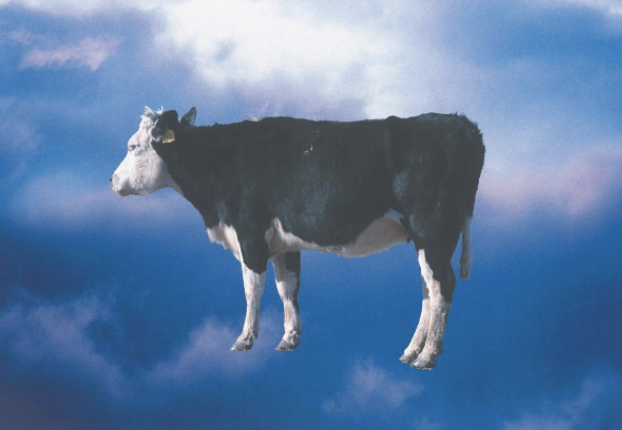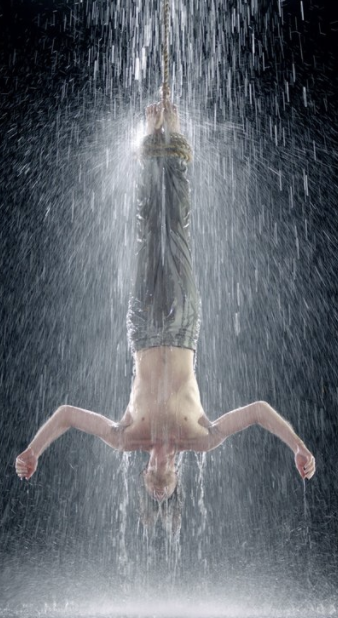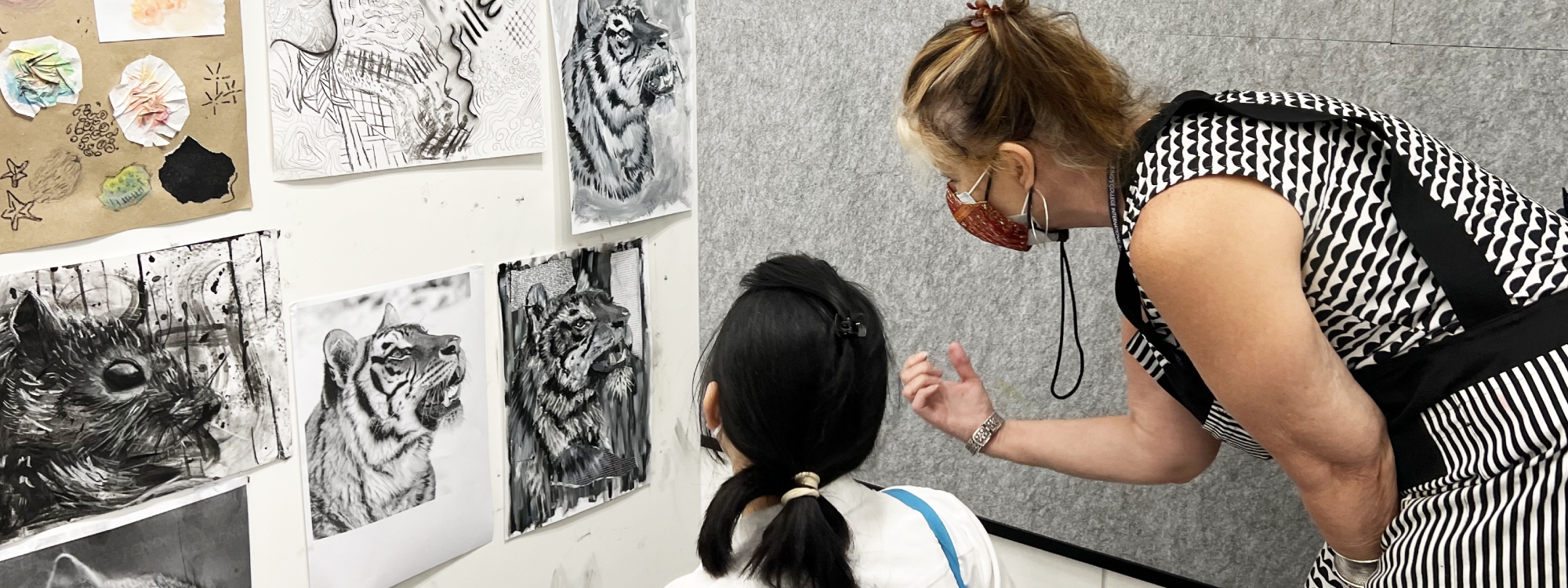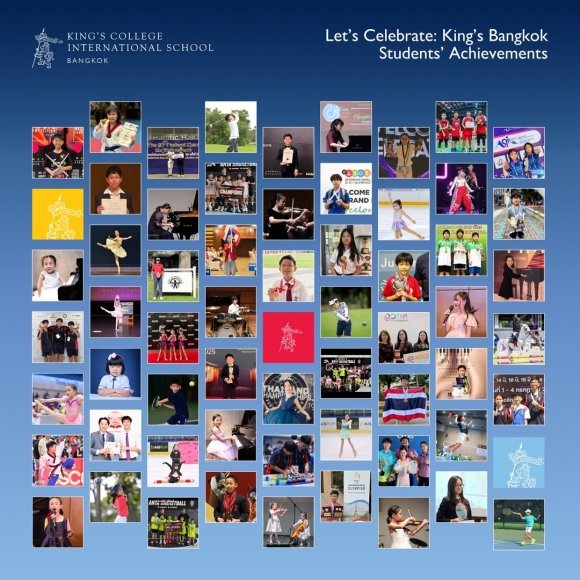Learn Like King’s Bangkok by Stacey Allen: Head of Art
King’s College International School Bangkok believes our 3 pillars - Academic Excellence, Co-curricular Programme, and Pastoral Care System - can strengthen and pave the way for all of our students’ futures. For academic excellence, it cannot be denied that teachers are the key to success, so we always select the best people to work with us and the children.
Stacey Allen, Head of Art at King’s Bangkok, has extensive experience in teaching, academic Art, and in the industry. Having received two BAs (in Visual Art, and History of Art), two MAs (in Digital Media, and Arts Administration) and a Post graduate diploma of Education, she continues to demonstrate her thirst for knowledge by pursuing a third Masters in her own Art practice. Stacey has worked around the world in different capacities, exhibiting and curating Art, teaching in a variety of international schools, and working in galleries and museums as an education officer. She lives and breathes Art, and her aim is to pass on her passion for the subject to her students while learning just as much from them as they do from her. We recently interviewed her and would like to share some of her thoughts of teaching and her experiences.
1. What is Art for you?
It’s how you express yourself: how you dress, how you talk about anything that’s visual. Things that are around us every day act as a stimulus for creating art, and it can be created anywhere, whether it’s in a studio or outside of school.
2. What is your favourite piece of Art and why?
It’s hard to limit my favourites to one, so here are two:
-
Late Australian indigenous artist, Michael Riley’s (Australian, 1960) –2004) conceptual piece: “Untitled [Cow]”, 2000. It’s a photographic piece that depicts a cow floating in the sky, and while it is quite incredibly beautiful, it is also symbolic of the artist’s childhood and histories of Aboriginal peoples.

-
Bill Viola (USA, b. 1951) a digital artist who creates visual installations, has a lot of work that I really like, especially his series based on the early Renaissance. I have even seen one of his slow-motion pieces in a church in Australia. His videos are rich and really grab you; his choices of sound work really well and create an incredible experience.His works focus on the ideas behind fundamental human experiences such as birth, death and aspects of consciousness.

Still from Bill Viola’s Martyrs (Earth, Air, Fire, Water) series
3. What is your favourite type of Art and why?
I love pieces from the early Renaissance - before the High Renaissance when art is highly polished; it’s a beautiful period where artists were seeking new ideas and yet their frescoes were still naive. This is something which I emulate in some of my personal pieces also.
4. Have you always taught?
Hard question, because some of my work has been done in museums and galleries when I was a gallery education officer. Overall, I would say that I have been teaching for over 30 years, but in different capacities.
I have had experiences teaching outside of the school environment, including working around the world in places such as the Whitworth Gallery in the UK, various regional and state galleries in Australia, and at events like Sculpture by the Sea in Sydney, which is an annual exhibition of over a hundred sculptures placed on the beach between Bondi and Tamarama.
I have worked with exhibiting artists from the UK to Australia, conducted interviews and created digital teaching resources; I curated an exhibition of traditional Rajasthani women’s artwork which toured Australia. I lived in Italy and the UK for a few years before starting international teaching, which took me to the UAE, Oman, and Indonesia before Thailand.
So, my experiences are quite varied but each event is interwoven. These all add to and support my teaching as I have a sound understanding of the contemporary Art world.
5. How do you encourage students to love art? If there are children who initially seem to have an aversion to the subject, what methods would you employ to change their attitudes towards it?
I think it's really important that the Art that we do is centred on the world that the kids live in. Thus, everything I do is relevant to them and that captures their interest because it's immediately their world. As much as I love the Renaissance, it's no good trying to inspire them with it if there’s no link to their world and what they are doing.
For example, I've been doing a project with Year 6 on Pop Art and we looked at how Roy Lichtenstein was influenced by his childhood. So, the next project with the students will have them using images that influence them everyday, things that they see, things that are important to them, and include it in their sculptures. For me, it really has to relate to the world that they live in and that they're interested in.
6. Do you teach your students to be creative? If not, how do you draw out their innate creativity so that they can create such stunning works?
It's a matter of inspiring them with different media, surprising them with different projects that they are not expecting. I try not to do the same thing all the time and instead, mix it up every year so that students don’t think “we're going to do the same as the kids did last year”. I like it to be a change so that they realise that Art is not prescribed, that there are so many ways that you can approach it, and that the way that they engage with it as individuals is just as valid and important as other people.
It doesn't matter what media you're using. Digitally producing Art, for example, doesn't make it easier. In fact, I’ve got some students doing Digital Art at the moment, but it's at the exact same level as what I'm teaching in other Art forms. It requires a lot of the same sensibilities of colour and motivation and composition, thinking outside of the box, and being as creative as other Art forms. Actually, with more people being drawn to it now, they are able to appreciate other art forms as well.
I encourage everybody to do something different. 1 + 1 doesn’t always equal 2 in Art. I want them to have diversity.
7. Do you think there is a certain way to learn art? Must everyone paint, or draw or collage, or do you encourage everyone to find their own personal style right from the start?
I encourage the older students to find their personal style and feel comfortable in it more than the younger ones, as they are more independent, and I don’t base it on a specific media or artform. Rather, I may base their lessons on a subject or concept. So, we might just happen to cover one area in printmaking or sculpture, or we may take the same core idea and explore it in different drawing or photography.
An example of this is my Year 8s. We are looking at Water and have been since the beginning of the year, which means we have done several projects approaching it in different ways and using a variety of media and artforms, being inspired by a range of quite different artists.
8.You’ve been doing Art in different forms for years and years. How did you get started? How do you continue to push yourself to step out of your comfort zone?
Since a very early age, I have been excited about Art, and my parents were hugely supportive of my studies. Fast forward to today and now, I’m completing my third Masters in my own Art practice. My journey is ongoing because education doesn’t stop. Art is exciting and, since it’s my passion, I just can’t get enough of it. This - my enthusiasm and enjoyment - is something that I try to pass on to every student I teach.
Art is the most lively subject. It's changing every minute of the day and I’m always finding new artists and new ways of doing things. This is evident in some of the projects my students and I are working on at the moment. At times, the students’ art is based on artists and pieces that I’ve never heard of a month ago, that I’ve just learnt about in social media or have emerged from current research.
The artists of today are constantly inspiring me and the development of different ideas for students, which is good because, if I’m motivated as a teacher, I can better support the kids. I’m open about the fact that sometimes I attempt something I’ve never done before - I say to them, “you know, this is new to me” - so that they get a sense that everything is new, Art is always changing, and it's a matter of trying out different things and finding encouragement in the diversity of Art.
9. We have seen some of the artwork that your students created, especially the new iGCSE cohort, and they look brilliant. What other types of projects do you have in store?
At the moment, Year 10s are moving on to developing their journals, now that their personal confidence in experimentation is more solid. Now, we are ensuring that they clearly document and explain their choices of themes, media and art forms in their journals, which is part of their course.
Alongside this, they have been exploring mark-making (drawing), extending this to mixed media, and understanding how to use it in their work. They are going beyond what they stereotypically think a painting is, or how to use a paintbrush, and are now exploring the use of more unconventional media and tools to create marks and lines. They started this experimentation in studying tone and have now been moving onto animals, with a central concentration on the expressive nature of their fur so students can really focus on the linear quality of mark-making.
Beforehand, we worked on illusions and, afterwards, I will go into some photography and digital work, watercolour, portraits and self-portraits, and more.
10. With older students (Year 9s and Year 10s who are starting their iGCSEs), are there specific points they have to make in their artwork? As Art is so subjective, what must they do to have success as the subject becomes more complex? How do you support students so they can excel in whatever their style may be?
They've got to start developing confidence in different media and knowing that experimentation is part of that. Moreover, for me, there’s no right or wrong way of doing things. It’s true that some techniques may be a little bit more particular than others, but mostly with the older kids, it's a matter of them finding their own way.
At first, yes, their journey is a lot more directed by the teacher so there can be a strong foundation but they eventually reach a point where they are creating Art totally by themselves. So, it's sort of a gradual development of their confidence and their maturity in experimenting and in exploring artists, use of dark and light, considering the qualities of different media.
Breadth of media use will continue to be encouraged at A Level because it's not that all paintings are inspired by other paintings. Instead a photograph could help you with the drawing. A painting could help you with printmaking. Things move backwards and forwards and are a lot more fluid than they used to be.
Art is personal because the subject matter that the kids deal with is so personal. What they make comes from them. So it can be really difficult at times as the kids get older and more independent with the subject matter. Their interest reflects their lives which in their teens can be difficult, demanding, confusing. Due to this, Art teachers can develop a very strong relationship with students and see a different side to them from others.
It is expected that Art becomes quite individual, so I suppose if you gradually build up that expectation through the years of teaching, then it becomes more natural for the kids. They come to understand that artists work from within and that that's where they will be working from as well. Success in the subject comes from this gradual progression in understanding where your ideas come from and having confidence to work through them, rather than a sudden “yeah, you got to do this now.”
11. How does Art slot into an academic curriculum? How does it support studies of other disciplines?
Since it's creative and has students thinking outside of the box, most of the time it’s a way of connecting the world that we live in more directly with things that are maybe from the past or theoretical. It really is a lively subject; it is alive. Art is a fabulous subject that dictates my life and it will with the students too, who are all doing wonderful work. These abilities to think differently and not just following, you know, like sheep, is becoming more and more important and entrepreneurial. Education has changed and the way we teach has changed with it, so jobs have, too. People need to be a lot more creative and experimental with their ideas these days in general, and that comes up in art all the time.
12. What do you think about students following more creative, artistic paths in the future?
As students grow into themselves and their journey becomes more individual and personal, they have to find passion, drive and creativity within themselves. That’s hard. Sometimes it really is difficult to find your way in the world with so many different directions that you could take. For this reason, a lot of kids say actually, Art is one of the hardest subjects because it's going to come from within.
Following a path in the Arts can be daunting. In fact, it always is. Every day. However, that’s exactly what Art is. I, myself, travelled after university and didn’t start teaching until my late twenties. I never thought about becoming a full-time artist - that’s a really hard area to go into and I have always been very, if not more, interested in history and exhibitions and galleries, et cetera. That’s why I did the master's in arts administration and worked in curatorial and education areas in museums, in Australia and England.
While it is hard to follow a path in Art, I think it's actually easier now than in my era. I find that there are so many more careers that need creative thought and ideas. We now require so many more creative people with the computers now, with the digital world.
Stacey is the right person to impart knowledge and support the creative journeys of our students. She embodies wisdom, one of our three core values, with her readiness to always learn and her experiences teaching and communicating about and through Art around the world. Her interest in the personal lives and values of students allows her to keep the Art they create relevant to them, maintaining the importance of Art and thinking outside of the box in them all and ultimately sending them down a path of kindness, open-mindedness and willingness to engage further with their world. Her clear love of Art shines through every single day and we cannot wait to see the works her students create as her great heart takes them further.



 中文
中文 日本語
日本語 EN
EN




